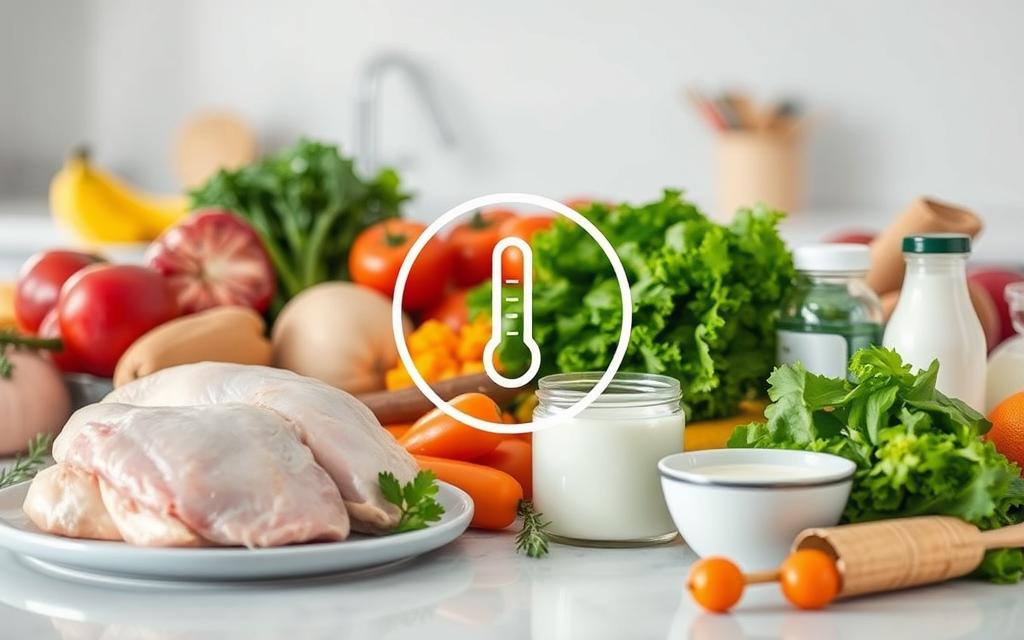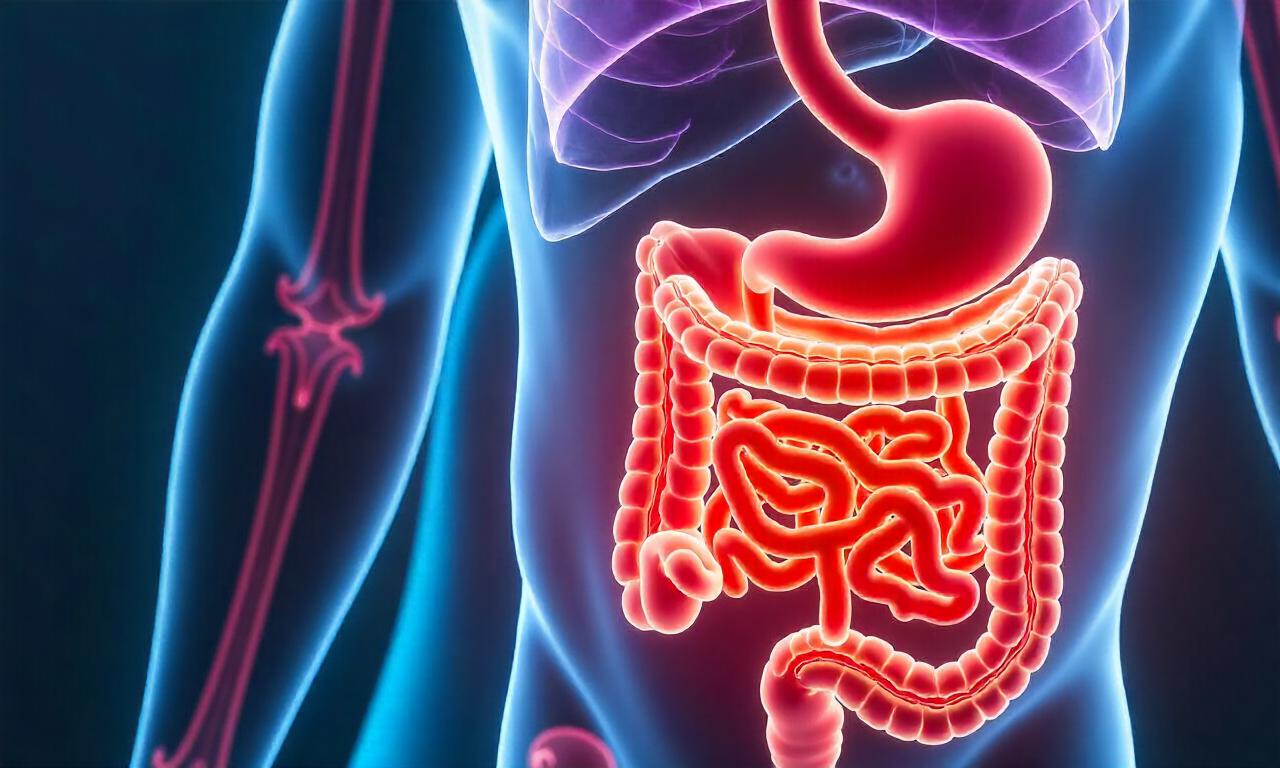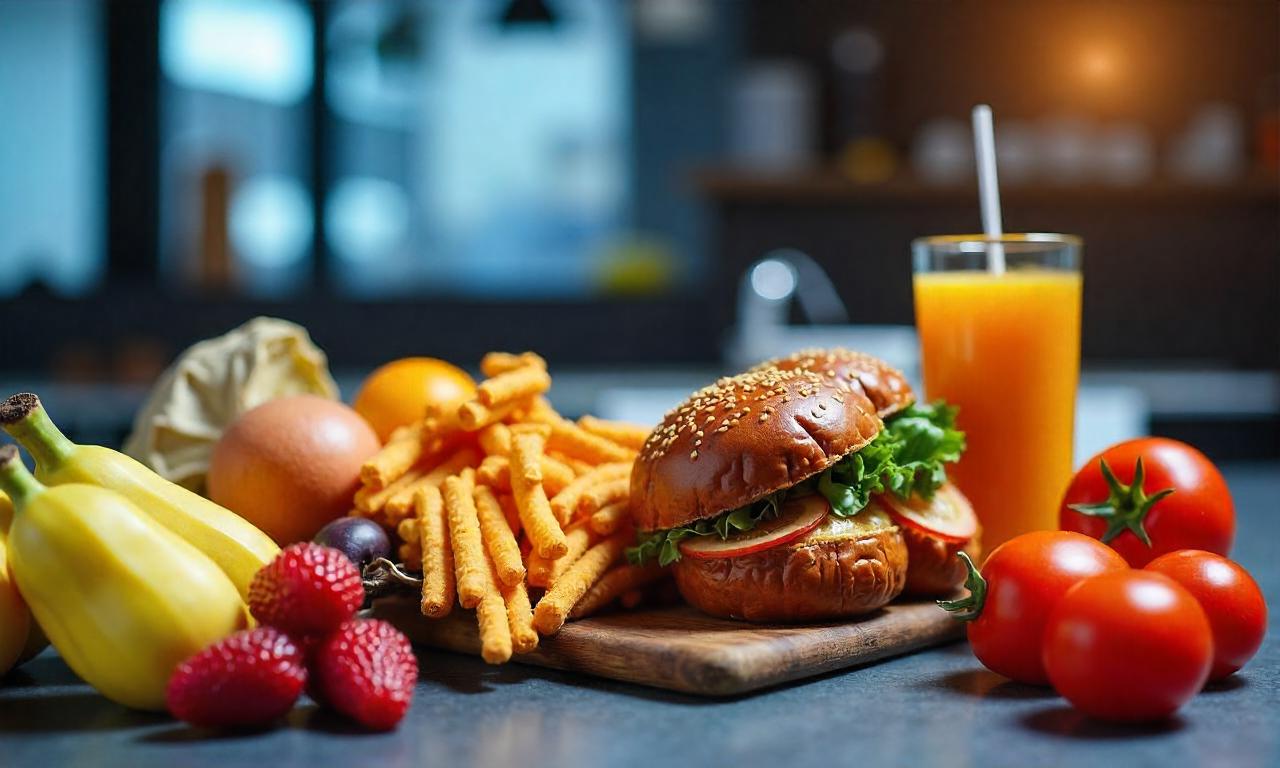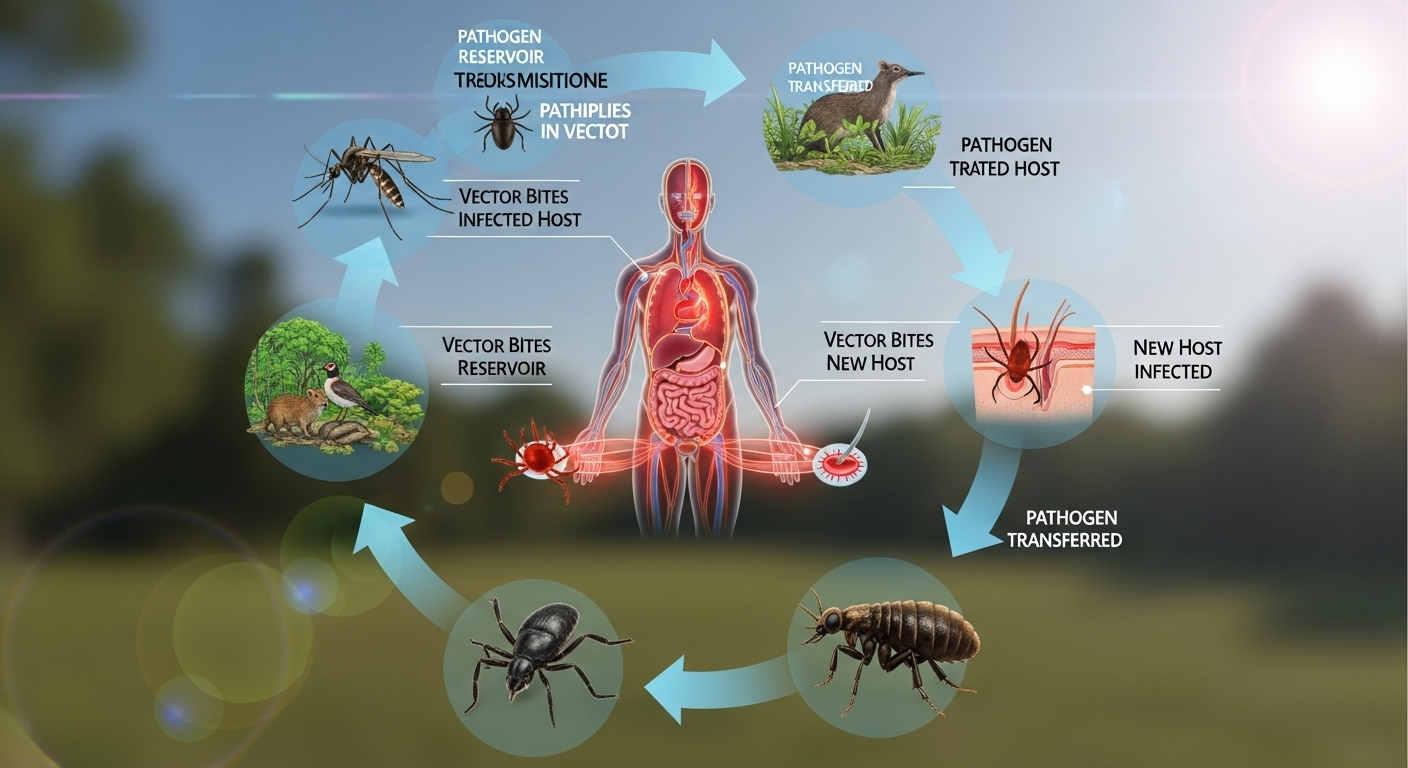Did you know that one in six Americans gets sick from contaminated food each year? With 48 million cases reported annually, food safety is more critical than ever. Understanding proper handling techniques can make a huge difference in preventing illnesses.
From raw meat to poultry, every step in food preparation matters. Simple practices like washing hands, using a thermometer, and storing food at the right temperature can keep your meals safe. These small changes can protect your health and your family’s well-being.
We’ve gathered the best tips from trusted sources like the CDC and Cornell University. Our guide will walk you through essential steps for shopping, storing, and preparing food safely. Let’s work together to make every meal a healthy one.
Table of Contents
ToggleUnderstanding Foodborne Illnesses and Their Impact
Contaminated food is a leading cause of illness across the United States. Each year, millions of people experience health issues due to unsafe food practices. These illnesses, often caused by harmful bacteria or viruses, can have serious consequences if not addressed properly.
What Are Foodborne Illnesses?
Foodborne illnesses occur when we consume food or drinks contaminated with harmful pathogens. These pathogens include bacteria, viruses, and parasites. Common culprits are Salmonella, E. coli, Norovirus, and Listeria. Contamination can happen at any stage, from farming to cooking.
Common Pathogens and Symptoms
Recognizing the symptoms of food poisoning is crucial. Here are some common signs to watch for:
- Diarrhea
- Stomach cramps
- Nausea and vomiting
- Fever
Improper handling of raw meat, fruits, and vegetables can increase the risk of contamination. Using separate cutting boards for raw and cooked foods helps prevent cross-contamination. Storing leftovers in the refrigerator within an hour of cooking also reduces the chance of bacterial growth.
Regular cleaning of kitchen tools and surfaces is essential to eliminate harmful bacterium. By making informed decisions during food preparation, we can significantly lower the risk of foodborne illnesses.
How to Protect Yourself from Foodborne Illnesses
Proper food handling begins with smart shopping and storage choices. These steps are essential to prevent contamination and ensure your meals are safe to eat. Let’s explore practical tips to keep your food fresh and free from harmful germs.
Safe Shopping and Storage Practices
Start by inspecting food packaging at the store. Avoid cans or jars with dents, cracks, or bulges, as they may harbor bacteria. Once home, refrigerate perishable items like meat, seafood, and dairy immediately. Keep your fridge at 40°F or below to slow bacterial growth.
- Check expiration dates on all products.
- Store raw meat and seafood on the bottom shelf to prevent drips.
- Use separate bags for raw and ready-to-eat items.
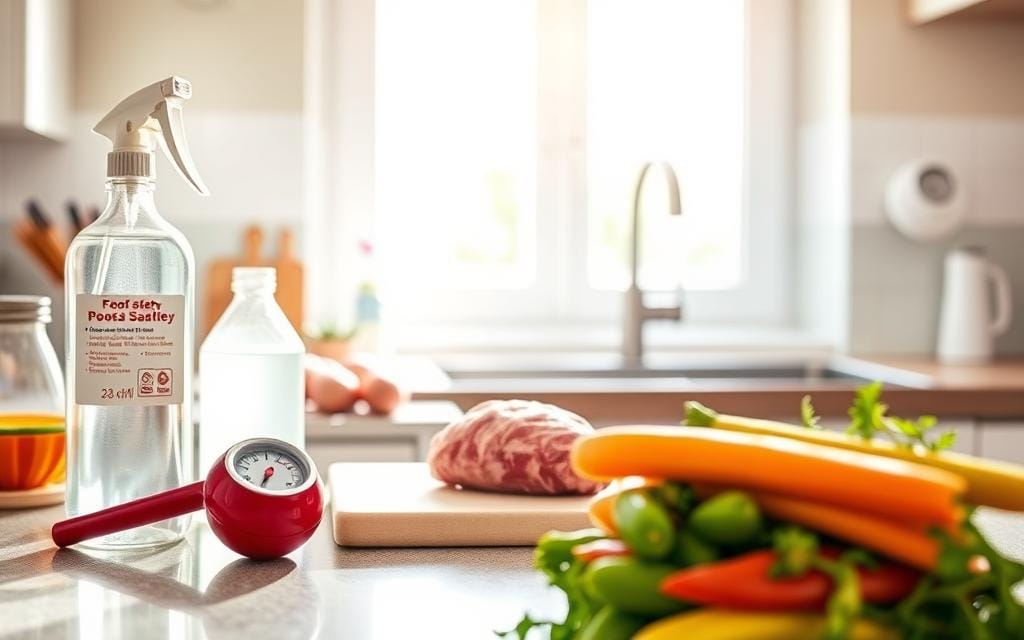
Effective Thawing and Food Preparation Tips
Thawing food safely is crucial. Never leave it on the counter, as this allows bacteria to multiply quickly. Instead, use the fridge, cold water, or the microwave. When preparing meals, clean all surfaces and utensils thoroughly. Wash hands before and after handling raw ingredients.
- Use separate cutting boards for raw meat and produce.
- Cook eggs, poultry, and seafood to their recommended temperatures.
- Store leftovers in airtight containers and consume within 3-4 days.
Importance of Using a Food Thermometer
A food thermometer is a must-have tool for ensuring food safety. It helps verify that meat, poultry, and seafood reach safe internal temperatures, killing harmful bacteria. For example, cook chicken to 165°F and ground beef to 160°F. This simple step can prevent illness and keep your family healthy.
- Always test the thickest part of the food.
- Clean the thermometer after each use.
- Follow temperature guidelines for different types of food.
By following these practices, we can reduce the risk of foodborne illness and enjoy meals with confidence. Small changes in our routines make a big difference in our health and well-being.
Practical Food Safety Tips and Techniques
Simple hygiene practices can significantly reduce the risk of food contamination. By focusing on cleanliness and proper handling, we can create a safer kitchen environment. Let’s explore essential techniques to keep our meals healthy and free from harmful germs.
Clean Hands, Utensils, and Surfaces
Handwashing is the first step in preventing the spread of disease. Wet your hands, apply soap, and scrub for at least 20 seconds. Rinse thoroughly and dry with a clean towel. This simple routine removes harmful bacteria and keeps our hands safe for food preparation.
Cleaning utensils and surfaces is equally important. Use hot, soapy water to wash cutting boards, knives, and countertops after each use. This eliminates germs and reduces the risk of contamination. Regularly sanitize kitchen tools to maintain a hygienic workspace.
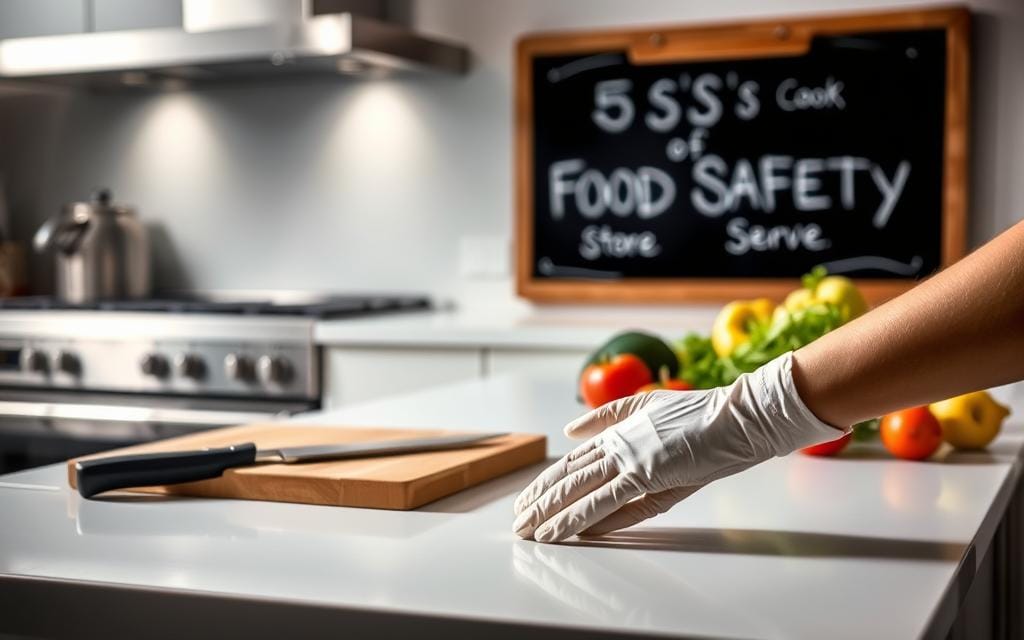
Preventing Cross-Contamination
Cross-contamination occurs when harmful bacteria spread from raw foods to ready-to-eat items. To prevent this, use separate cutting boards for raw meat and produce. Dedicated utensils for raw and cooked foods also help minimize risks.
Store perishable food in the refrigerator within an hour of exposure to room temperature. This slows bacterial growth and keeps your meals safe. Prompt refrigeration is especially crucial for items like dairy, meat, and seafood.
When reheating hot food in the microwave, ensure even heating throughout. Stir the food halfway through to eliminate cold spots. This practice kills bacteria and ensures your meal is safe to eat.
| Food Type | Safe Storage Time |
|---|---|
| Raw Meat | 1-2 days |
| Cooked Leftovers | 3-4 days |
| Dairy Products | 7 days |
| Fresh Produce | 5-7 days |
By following these practical tips, we can maintain a safe and hygienic kitchen culture. Small changes in our daily routines make a big difference in our health and well-being.
Conclusion
Every meal can be a safe one with the right practices in place. Ensuring proper internal temperature during cooking is crucial for preventing food poisoning. Using a food thermometer is the best way to verify that your food is cooked thoroughly.
Leaving food at room temperature for too long can lead to bacterial growth. Always refrigerate perishable items promptly to keep them fresh and safe. These simple steps are key to maintaining a healthy kitchen environment.
By following these guidelines, we can reduce the risk of food-related illnesses. Staying informed about food safety information is the best way to protect our health. Let’s make smart choices in our preparation and storage to ensure safe eating for everyone.
We encourage you to revisit any section for a refresher and share these vital practices with family and friends. Together, we can create a safer way of enjoying our meals every day.
FAQ
What are foodborne illnesses?
Foodborne illnesses are infections or irritations caused by consuming contaminated food or beverages. Bacteria, viruses, and parasites are common culprits.
What are the symptoms of food poisoning?
Symptoms often include nausea, vomiting, diarrhea, stomach cramps, and fever. These can appear within hours or days after eating contaminated food.
How can we prevent cross-contamination in the kitchen?
Use separate cutting boards for raw meat, poultry, and produce. Always wash hands, utensils, and surfaces with soap and water after handling raw items.
Why is a food thermometer important?
A food thermometer ensures meat, poultry, and seafood reach safe internal temperatures, killing harmful bacteria like Salmonella and E. coli.
How should we store perishable foods?
Refrigerate perishable items within two hours. Keep your refrigerator at 40°F or below to slow bacterial growth and maintain freshness.
What’s the safest way to thaw frozen food?
Thaw food in the refrigerator, under cold running water, or in the microwave. Avoid leaving it at room temperature, which promotes bacterial growth.
How long can leftovers stay in the refrigerator?
Leftovers are safe for up to four days in the refrigerator. Reheat them to 165°F to ensure they’re safe to eat.
Should we wash fruits and vegetables before eating?
Yes, rinse produce under running water to remove dirt and germs. Avoid using soap, as it can leave residues on the food.
What’s the best way to clean kitchen surfaces?
Use hot, soapy water to clean countertops, cutting boards, and utensils. Sanitize surfaces with a mixture of bleach and water for added safety.
Can we rely on appearance to know if food is cooked safely?
No, color and texture aren’t reliable indicators. Always use a food thermometer to check internal temperatures for safety.

